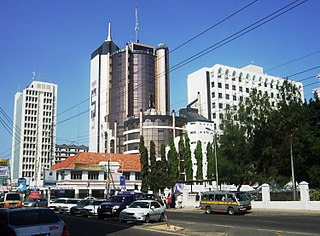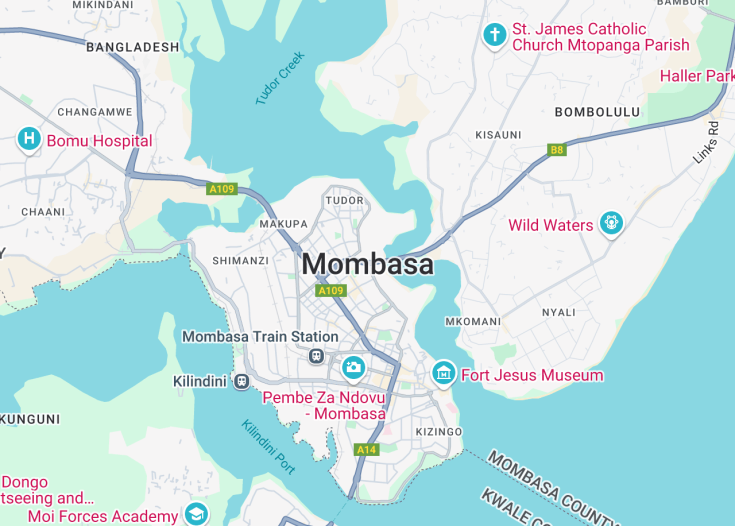Mombasa, Kenya’s coastal gem, serves as a vibrant intersection of culture, history, and scenic beauty. This city offers a unique blend of ancient and modern attractions, from the historic Fort Jesus to the white sandy beaches of Nyali and Diani.
Mombasa’s rich heritage is palpable in its architecture, cuisine, and the Swahili language, reflecting a mix of African, Arabian, and Indian influences. The warm tropical climate, diverse marine life, and friendly locals make it an ideal destination for history enthusiasts, beach lovers, and adventure seekers alike.
Visit during the cooler months from June to September to fully enjoy exploring Mombasa’s historical sites and beautiful beaches without the extreme heat.
Be sure to experience a dhow cruise for a taste of local culture and breathtaking sunset views over the Indian Ocean. A must-do activity when in Mombasa.
Top things to do & see in Mombasa
Select the following sights and activities to discover best tickets and tours available in Mombasa.
Mombasa: The Tropical Paradise of Kenya
| Country | Kenya |
| Time in Mombasa | GMT+3 |
| Language spoken | Swahili, English |
| Population | 1,208,333 (2022 Census) |
| Currency | Kenyan Shilling (KES, KSH) |
| Airports | Moieties International Airport (06 mi / 10 km) |
Mombasa, Kenya’s second-largest city, is a coastal city that encapsulates the essence of a tropical paradise with its rich history, cultural diversity, and strategic geographical positioning. As a major trade center since ancient times, Mombasa exhibits influences from Arab, Portuguese, and British settlers —visible in its architecture and the historic Old Town.
Mombasa’s allure is not just historical; it is also a modern-day coastal resort city, renowned for its vibrant nightlife, extensive coral reefs, and sandy beaches that attract sun-seekers and explorers alike. It’s also famous for its world-class diving spots and marine parks, such as Mombasa Marine National Park which is home to a diverse range of marine life. The city’s economy thrives on tourism, but it is also a pivotal commercial hub with the largest port in East Africa, the Port of Mombasa, facilitating significant shipping and logistics operations.
Cultural festivals, such as the Mombasa Carnival, showcase the city’s multicultural makeup through music, dance, and the arts, offering visitors a unique insight into the diverse cultures of Kenya. Historically, Mombasa was part of the historical trade routes that spread between the Middle East and East Africa, and its strategic location made it a focal point for the trade in spices, gold, and ivory.
Various landmarks, such as Fort Jesus built by the Portuguese in 1593, illustrate its tumultuous past and significance in the defense against intruders during the age of exploration and trade. As a melting pot of cultures, races, and religions, Mombasa presents a distinctive blend of urban and traditional lifestyles. Its cuisine reflects this diversity, with a fusion of Arabic, Swahili, and Asian influences making the culinary experiences here particularly memorable.
Furthermore, Mombasa is an exemplar of conservation efforts, with sanctuaries like Haller Park — an ecological park that turned a limestone quarry into a vibrant ecosystem — showing successful environmental management practices. In a broader perspective, while embracing modernity, Mombasa remains deeply connected to its roots and traditions. This connection is vividly echoed in the day-to-day lives of the locals, making it a vibrant city that continuously fascinates and welcomes all who visit.
Where is Mombasa?
Mombasa is located on the southeastern coast of Kenya, along the Indian Ocean.
Distances:
| Route | Distance by car | Time by car |
|---|---|---|
| Nairobi to Mombasa | 485 km | Approximately 8 hours |
What is Mombasa famous for?
Mombasa is famous for its white sandy beaches, rich history including Fort Jesus, a UNESCO World Heritage site, vibrant cultural festivals, and its status as a major hub for international trade and commerce.
History
Up to 1500: Early Settlements and Trade
Mombasa, Kenya’s second largest city, has a rich history that dates back over a millennium. Initially settled by Swahili and Bantu peoples, Mombasa grew into a vibrant trade hub, owing principally to its strategic location along the Indian Ocean. By the 12th century, the city was well-established as a key port, frequented by traders from across the African continent, the Middle East, and Asia. The city’s trade primarily involved gold, ivory, and slaves, exchanging hands with fabrics, jewelry, and other goods from abroad.
1500 – 1895: Era of Colonization and Resistance
The arrival of the Portuguese in 1498 marked the beginning of European influence in Mombasa. Led by Vasco da Gama, the Portuguese sought to monopolize trade routes and exerted control by constructing Fort Jesus in 1593, which stands to this day as a historical monument. Despite Portuguese dominance, the city witnessed frequent uprisings and control shifted between various colonial powers including the Omanis, who ruled intermittently during the 17th and 18th centuries.
1895 – 1963: Under British Rule
The Berlin Conference of 1885 led to the proclamation of the British East Africa Protectorate, integrating Mombasa therein. Under British rule, the city transformed significantly with the development of the Uganda Railway initiating from Mombasa, which boosted economic activities and immigration. British colonial rule continued until Kenya’s vigorous struggle for independence, which was finally achieved in 1963.
1963 – Present: Growth and Modernization
Since independence, Mombasa has experienced substantial growth and development. It has evolved into a modern economic and cultural hub in Eastern Africa. Current challenges include urbanisation pressures and economic disparity, yet the city remains a focal point for trade and tourism in Kenya.
Visit Mombasa
What to see and do in Mombasa
Mombasa, with its rich history and vibrant cultural tapestry, offers a plethora of attractions and activities:
- Explore Fort Jesus, a historic fort that provides insight into the city’s tumultuous past.
- Visit Haller Park, a reforestation and animal rehabilitation project.
- Stroll along the white sands of Diani Beach.
- Discover the Old Town, where you can experience the city’s heritage and buy local crafts.
- Enjoy local cuisine, like Swahili dishes and seafood, at the city’s numerous eateries.
Annual Cultural Festivals
Mombasa is renowned for its vibrant festivals, including the Mombasa Carnival held in November, celebrating the diverse cultures of Kenya. Another significant event is the Maulidi Festival, observed in the Old Town, which celebrates the birth of Prophet Muhammad and features various cultural performances.
Best time to visit Mombasa
The ideal time to visit Mombasa is during the cooler and dryer months from June to October, and January to February. These periods offer optimal weather conditions for exploring the city and relaxing on its beautiful beaches.
Is Mombasa worth visiting?
Mombasa undoubtedly merits a visit for its rich historical background, unique cultural experiences, and stunning natural beauty. From its historical sites and vibrant markets to pristine beaches and lively festivals, Mombasa offers a well-rounded travel experience that caters to enthusiasts of history, culture, and nature alike.










